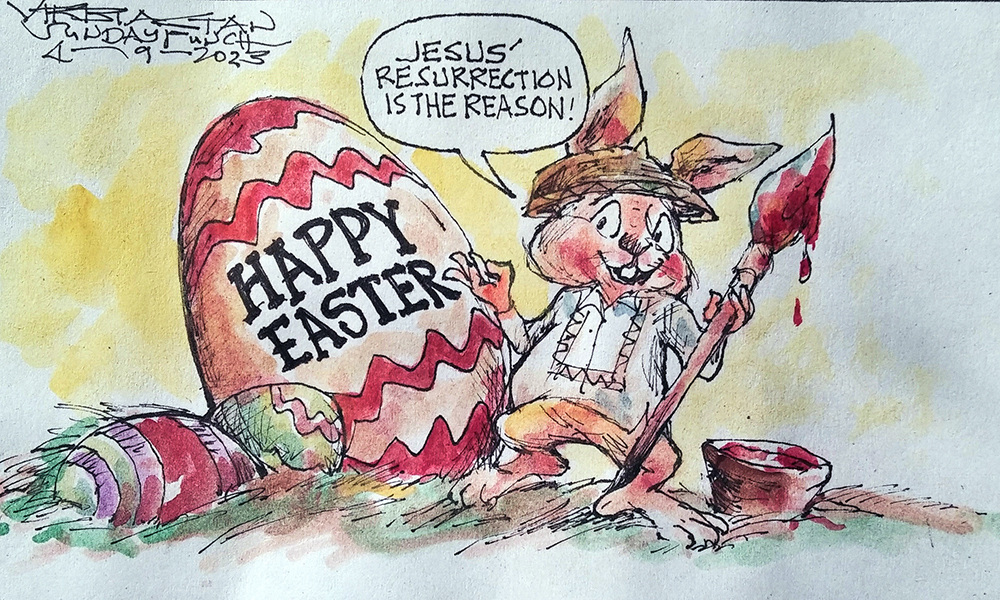
Understanding Easter through colored eggs
TODAY’S Catholic laity are of the belief that celebrating Christmas, the birth of Jesus Christ, is the most significant religious observance. We have 15-45 days season of celebration marked by colorful lights, gift-giving topped off by unrivalled commercialism in all malls, restaurants and stores immortalized by the image of a Santa Claus.
In sharp contrast, Easter is just a one-day celebration that most Christians see as one that comes and goes In fact, the only “fun” opportunity for remembering is the Easter Egg Hunt for children and yet nothing is explained how the tradition started and its relevance to Easter.
It is fair to say that for most Filipino families, the only known material association with Easter is about eggs. But even with that there is little or no understanding of the eggs’ relevance to Easter.
Today’s Easter Sunday should be a great opportunity for parents and grandparents to teach and remind our young generations about the symbolism and significance of Easter, and we can start with Easter eggs.
For instance, it’s been written that “early Christians in Mesopotamia dyed eggs in the period after Easter. The dyed eggs represent new life and rebirth, of the resurrection of Jesus Christ.”
As Wikipedia further defines it: “Easter egss, also called Paschal eggs that are decorated for Christian feast of Easter to celebrates the resurrection of Jesus… that Easter eggs symbolize the empty tomb of Jesus from which Jess was resurrected…. In fact, one ancient tradition was the staining of Easter eggs with the color red “in memory of the blood of Christ, shed at the time of his crucifixion.”
“Mediaevalist scholars normally conclude that the custom of Easter eggs has its roots in the prohibition of eggs during Lent after which, on Easter, they have been blessed for the occasions.”
So let our understanding of Easter eggs help today’s generation accept and understand that Lent and the observance of Easter Sunday, is, in fact, the most significant, not Christmas, that it’s about “Resurrection and victory over sin and death – the day Jesus Christ had risen.”
Here’s the scene that we must recall as told in the New Testament, Mark 16:5-7:“As they entered the tomb, they saw a young man dressed in a white robe sitting on the right side, and they were alarmed. ‘Don’t be alarmed,’ he said. ‘You are looking for Jesus the Nazarene, who was crucified. He has risen!’









